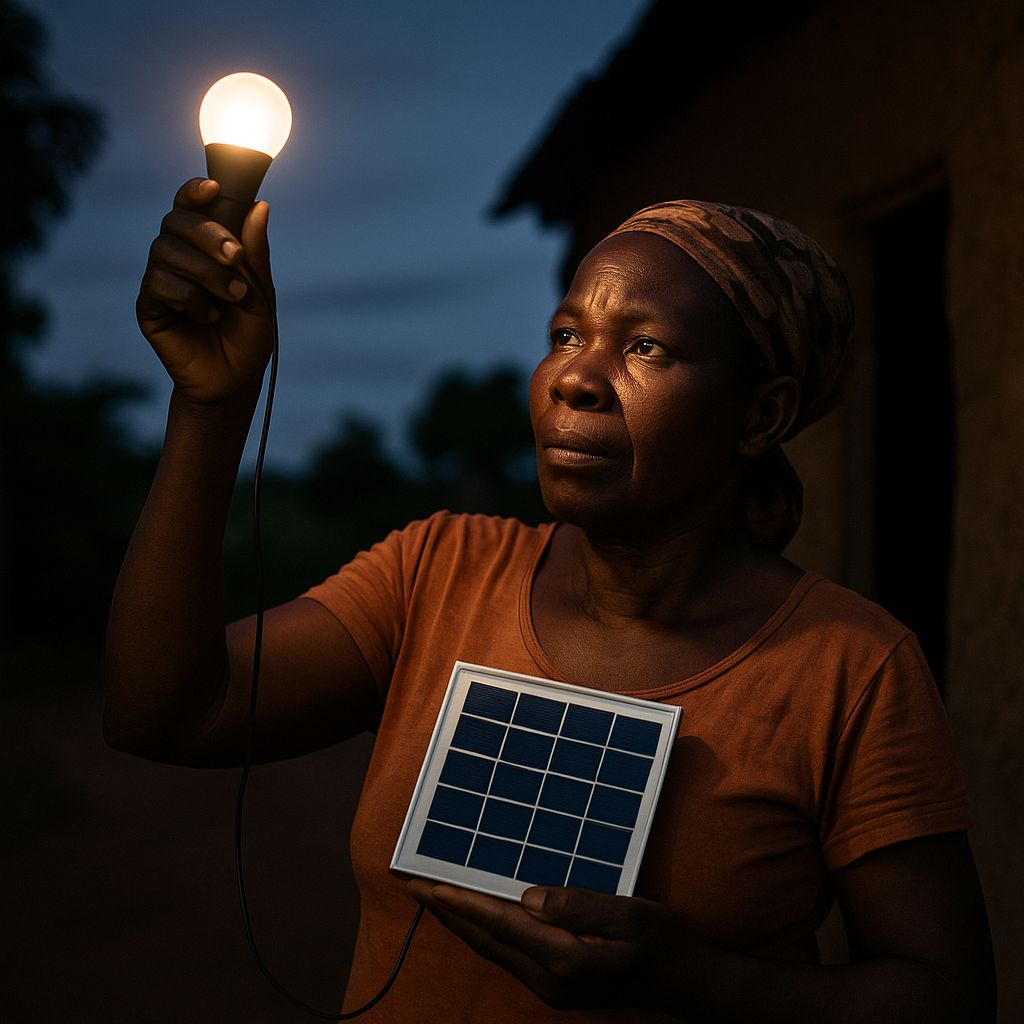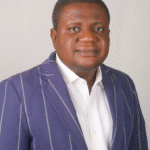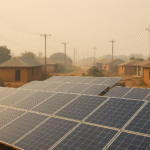It’s hard to forget the sound of generators at night.
That deep, uneven hum that fills the silence after the national grid collapses again. Growing up in Nigeria, it was the soundtrack of progress and frustration all at once. Every hum was proof that someone could afford light, and that many others could not.
Years later, as I travel across the continent for work, I still hear that sound, in Lagos, in Monrovia, in Lusaka. It’s the same rhythm of resilience: people buying their way into electricity because systems have failed to provide it affordably or consistently.
The question that haunts me, and should haunt us all, is not just how we expand access, but who really pays for it.
The Price Tag of Inequality
A new International Energy Agency (IEA) report, Financing Electricity Access in Africa (2025), reminds us that energy poverty is not about sunlight or technology. It’s about finance. Africa has the world’s richest solar potential but the world’s poorest access to capital.
To connect every African home and business by 2030, the IEA estimates we need $25–30 billion annually. We’re getting barely a third of that. What’s worse is how that money arrives, usually as foreign-currency loans carrying interest rates two to four times higher than what developers pay in Europe or Asia.
That cost differential quietly shapes who gets electricity and who doesn’t. When financing costs inflate project expenses by 20 or 30 percent, investors retreat from rural projects and poorer countries. And when governments take loans in dollars to build infrastructure that earns in naira or cedis, it’s not long before debt repayments consume what should have powered schools, hospitals, or rural electrification.
So when policymakers celebrate “electrification milestones,” we must ask, at what fiscal cost, and for whose benefit?
Why the Money Still Doesn’t Work
I’ve sat in meetings where donors and financiers proudly present funding packages worth hundreds of millions of euros or dollars. But hidden in the footnotes are the real barriers: hedging fees, repayment schedules, and disbursement delays.
Even concessional loans come with conditionalities that make them hard to deploy. Local developers, the ones actually building mini-grids and solar homes, rarely qualify. When they do, payments arrive in tranches too small or too slow to sustain a project pipeline.
This is not just inefficiency; it’s structural exclusion.
We’ve built a financing system that rewards global institutions for lending but penalises local innovators for existing. That’s why Africa’s most promising solar startups are often forced to register abroad, raise in foreign markets, and price in foreign currencies, and effectively exporting ownership of Africa’s energy future.
The Burden of the Borrower
In 2024, African countries collectively paid over $160 billion in external debt service, triple what they paid a decade ago. A chunk of that debt came from infrastructure borrowing, including energy.
Every time a currency weakens against the dollar, the cost of light rises. The irony is cruel: a continent with abundant renewables is financing its clean energy dreams through debt denominated in someone else’s currency.
I once asked a finance minister during a panel discussion: “If you could refinance your country’s energy debt in local currency tomorrow, would you?”
He smiled and said, “We would, if anyone would lend in it.”
That single sentence captures the quiet trap of our energy transition. We are not just energy-dependent; we are financially dependent.
Rethinking Who Pays
Who should pay for Africa’s electrification, and how?
The IEA proposes a strategic blend of public and private capital, with concessional funds absorbing risk rather than amplifying debt. I agree. But that blend must start at home. We cannot rely indefinitely on external benevolence to power internal sovereignty.
Institutions like the African Development Bank (AfDB) and Africa50 are experimenting with local-currency blended finance. If scaled, these models could finally allow solar developers in Ibadan or Kisumu to borrow in naira or shilling, not dollars.
More importantly, they could allow governments to plan in local terms. A power purchase agreement priced in local currency gives predictability, and dignity, to both sides. It makes energy policy African, not imported.
What Energy Poverty Really Looks Like
When we talk about “energy access,” we often think of infrastructure: panels, turbines, grids. But I’ve learned that the human cost is more revealing than any statistic.
I once visited a rural health centre in northern Ghana where the midwife used her mobile phone light during childbirth. The facility had solar panels, but the inverter failed months earlier, no one could afford to replace it.
That moment crystallised for me that electricity poverty is not just a technical failure; it’s a financing failure. The inverter didn’t die because solar doesn’t work, it died because the system that funded it was never built to sustain it.
The Gender Gap in Energy Finance
There’s another invisible cost: the gender divide.
Women entrepreneurs and households are the first to suffer from unreliable power, yet they are the last to receive financing. According to the IEA, women-led enterprises in energy access face a $42 billion credit gap.
That number is more than an economic figure, it’s a reflection of who we still consider “bankable.” If we cannot finance the women selling solar lanterns in rural markets, we cannot claim to be financing a just transition.
Gender-lens finance isn’t charity; it’s efficiency. It ensures the people closest to the problem can also lead its solution.
The Cost of Inaction
If Africa continues on its current trajectory, universal access will not be achieved until 2045, fifteen years past the global target. Every year of delay means millions of children studying by candlelight, clinics running on diesel, and entrepreneurs powering their dreams through noise and fumes.
But it also means lost trust. People begin to see “clean energy transition” as another slogan that benefits consultants and donors more than communities. And that perception, once hardened, will be difficult to reverse.
That’s why financing reform is not a technical issue; it’s a political one. We must make capital accessible enough to translate ambition into real power.
A Continent of Light On Its Own Terms
I believe Africa’s transition will only be just when it is locally financed, locally owned, and locally measured.
Yes, we need international partnerships, but not as perpetual borrowers. We need instruments that empower African pension funds, sovereign wealth funds, and local banks to co-invest in their own future. We need more African investors sitting at the same table as donors, not at the end of the queue waiting for approval.
The journey toward that goal begins with reframing the question, from Who pays for light? to Who owns the power?
Conclusion
The next time we hear of another billion-euro energy pledge for Africa, we should celebrate, but also scrutinise. Because until the money works for those on the ground, every electrification milestone will still hum to the sound of generators.
We can no longer afford a transition powered by someone else’s currency.
If light is freedom, then Africa must own both the switch, and the system that powers it.
Follow Energy Transition Africa for more updates:
![]()
![]()
Vincent Egoro is a leading African voice on the just energy transition, fossil fuel phaseout and critical minerals governance. With over a decade of regional advocacy experience, he works at the intersection of transparency, accountability and sustainability, advancing community-driven solutions that put Africa at the heart of global climate action.



